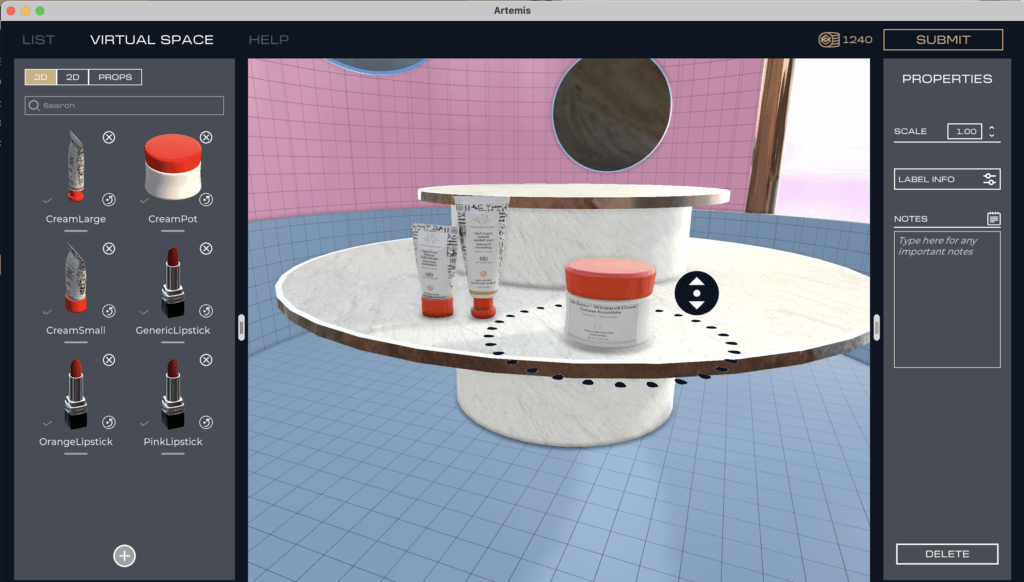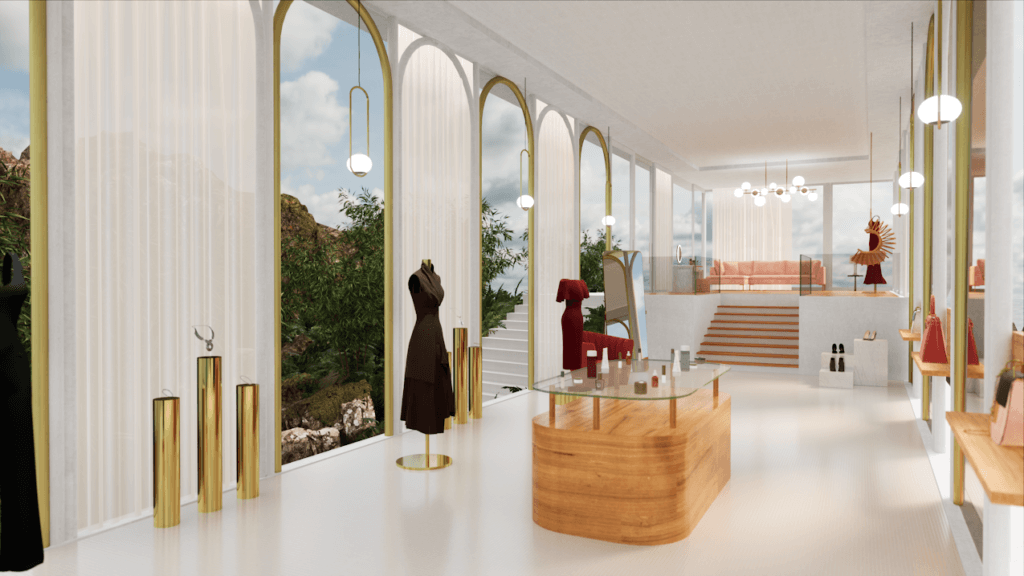When you think of XR in clothing retail, you probably think of online virtual try-on experiences. It’s true, this is a big part of the industry. However, it isn’t the only part. As online shopping eclipses shopping at brick-and-mortar locations, retailers are increasingly looking for ways to convey their narratives and carry the shopping experience into the digital world.
A fresh example of this comes from Emperia’s new Artemis platform.
Emperia’s Road So Far
Emperia creates virtual worlds, primarily for art, retail, and fashion events. The company has worked with organizations ranging from The World Health Organization to Christie’s. So far, clients have paid Emperia to design and host these virtual worlds.
This model isn’t going anywhere, Emperia will continue to offer these services, which it offers on a monthly or yearly basis. However, more businesses are becoming more interested in integrating virtual storefronts into their business models long-term. Emperia’s response to this is the Artemis platform.
“The past 12 months have been crucial in our space, with brands starting to switch from a one-off virtual promotional experiences state-of-mind into a notion of creating permanent online, flagship stores, which requires a different look and feel and user experience,” Emperia co-founder and CEO, Olga Dogadkina, said in a release shared with ARPost.
The Artemis Platform
Emperia calls Artemis “the world’s first virtual store management platform.” The software-as-a-service platform gives companies the tools to create and modify their own virtual worlds. Clients can start with one of four templates provided by Emperia, or do more work in creating their own virtual spaces. These spaces are then accessible on mobile, web, or headset.

From there, companies can upload models of their inventory items or, if they already have 3D inventory in their existing e-commerce infrastructure, Emperia integration can automatically access these models. These integrations also mean that Emperia worlds can work as a stand-alone website or be placed in a client’s existing virtual properties.
“With the realization that clients will be using these spaces in the long term, and the need to constantly change/update the virtual store, the same way they would change their physical space, Emperia has created a platform that enables full customization of both product display as well decor, allowing brands full creative control,” said Dogadkina.
World-Building and Metaverse Building
Clients get access to the world-building tools as well as insights into customer interactions within the Artemis worlds so that they can make the most of their virtual storefront. According to materials shared with ARPost, Emperia analytics show that users spend an average of fourteen minutes in an Emperia experience compared to two minutes on a flat website.
Artemis is a coming together of two trends that have been becoming more and more important in recent months: a shift toward immersive retail, and a shift toward content creation tools that are more easy for non-specialists to use. It is also significant that Artemis worlds are compatible with existing virtual properties.

One of the main criticisms of the “metaverse” is that different virtual worlds have their own styles and lack cross-compatibility. But, if Artemis virtual storefronts can exist in different virtual worlds, then this is only the most recent example of cross-platform content creation tools bringing the metaverse together.
We also know from other studies on XR-facilitated e-commerce that non-cosmetic discretionary items are the items that sell the best through virtual storefronts, suggesting that Artemis is well positioned in its current focuses on art and fashion.
Watch for Virtual Stores Near You
It will be interesting to see how companies use Artemis worlds as stand-alone solutions, additions to conventional e-commerce options, and in the increasing number of virtual storefronts that have been popping up in various virtual worlds.




